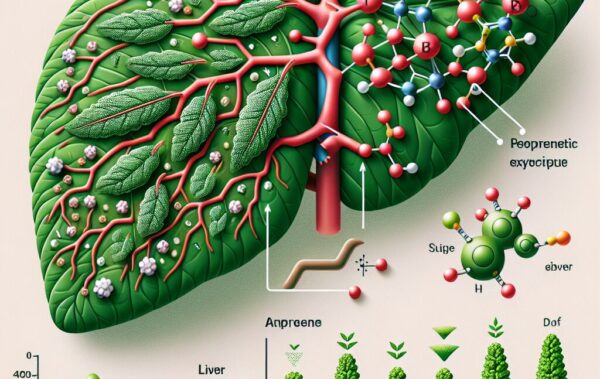- Understanding Kratom and its active compounds
- Exploring Kratom’s anti-inflammatory effects
- Health benefits associated with Kratom’s anti-inflammatory properties
- Precautions and proper usage of Kratom for inflammation relief
Kratom is a traditional herbal medicine that has captured the attention of the wellness community, especially due to its potential anti-inflammatory properties. Derived from the leaves of the Mitragyna speciosa tree, which is native to Southeast Asia, kratom has a rich history of use by indigenous peoples for a variety of ailments. Its increasing popularity in Western societies largely stems from its diverse phytochemistry, containing multiple active compounds known as alkaloids. These alkaloids, particularly mitragynine and 7-hydroxymitragynine, are believed to be responsible for kratom’s therapeutic effects.
The complexity of kratom’s alkaloid profile contributes to its multifaceted pharmacological actions. It interacts with a host of receptor systems in the body, including opioid receptors, which could explain its pain-relieving properties, as well as others that may modulate inflammation. The breadth of kratom’s alkaloid content is thought to induce a synergy that enhances its potential benefits while also creating challenges to comprehensively understand its pharmacodynamics.
The primary active alkaloid, mitragynine, for example, has been researched for its analgesic and anti-inflammatory effects. While firmer scientific consensus is necessary, anecdotal evidence suggests that kratom may exhibit similar anti-inflammatory effects as certain over-the-counter remedies. This leads many to explore kratom as a complementary approach to traditional pain and inflammation management, notably for conditions like arthritis that are characterized by chronic inflammation and joint pain.
Understanding these active compounds and their effects is the foundation for assessing kratom’s role in health and wellness strategies. By delving into this traditional herb’s chemistry, users can better navigate the diverse kratom product offerings available, including kratom powders, capsules, extracts, and even edibles. Each product harnesses the active compounds of kratom in different ways, providing options for individual preferences and needs.
Exploring further, we can examine specific strains that have been associated with anti-inflammatory benefits. For instance, red vein kratom varieties, sourced from leaves at a more mature stage, often contain higher levels of 7-hydroxymitragynine. This particular alkaloid is celebrated for its potential in combating inflammation and providing pain relief, making red vein kratom powders a popular choice for those seeking herbal benefits, especially concerning joint health. However, it’s important to note that individual responses can vary, and the efficacy of kratom can be influenced by factors such as dosage, strain, and personal physiology.
Research surrounding kratom continues to develop, with studies aiming to more accurately quantify the plant’s anti-inflammatory capabilities. These investigations are crucial in not only substantiating anecdotal claims but also in addressing concerns about the potential risks associated with kratom use. As the scientific community invests further into understanding kratom’s active compounds, the hope is to clarify its place within a holistic health regimen and ensure safe and informed use by individuals seeking its anti-inflammatory and other benefits.
Exploring Kratom’s anti-inflammatory effects
Delving into the specific anti-inflammatory effects of kratom requires a closer inspection of its interaction with the body’s inflammatory processes. Inflammation is a natural response of the immune system to infection or injury, yet when it becomes chronic, it can give rise to various health issues. The anti-inflammatory capacities of kratom are believed to be due largely to its alkaloids’ modulation of the immune system. Mitragynine, the primary alkaloid, is of particular interest due to its purported ability to inhibit the synthesis of inflammatory mediators.
To understand how kratom might exert these effects, it’s essential to look at the pathways typically involved in inflammation. The body’s inflammatory response usually involves several types of cells and signaling molecules, such as cytokines, which play a key role in promoting inflammation. Kratom’s alkaloids may help reduce the level of pro-inflammatory cytokines, thereby potentially diminishing inflammation and its associated pain and swelling. This property is particularly attractive to individuals with conditions like arthritis, where chronic inflammation leads to joint pain and degradation.
Reinforcing kratom’s potential role in managing inflammation are user reports indicating reduced joint pain and improved mobility upon regular consumption. Some of these anecdotal accounts point to specific forms of kratom as being more effective, such as red vein kratom capsules, which are convenient, discreet, and precisely dosed, potentially making them suitable for those seeking consistent anti-inflammatory and pain relief results.
While the anecdotal and preliminary scientific evidence provide a promising outlook, more in-depth clinical research is needed to establish kratom’s anti-inflammatory potency. Studying its full spectrum of alkaloids and their respective actions could unlock new applications and refine existing ones, and perhaps support the evidence needed by healthcare professionals to consider kratom in certain therapeutic contexts.
Therefore, the potential of kratom as a natural anti-inflammatory agent is an evolving area of interest. Though still emerging, this interest is backed by a growing community of people seeking herbal benefits and joint health support without relying solely on pharmaceutical options. Kratom’s unique and complex alkaloid profile might be a key factor in offering a botanical alternative that aligns with holistic health practices.
Health benefits associated with Kratom’s anti-inflammatory properties
 The herbal landscape is continuously expanding with natural remedies that promise health benefits without the heavy reliance on pharmaceuticals, and kratom appears to be a frontrunner, particularly in the realm of anti-inflammatory aid. As we’ve explored the properties and effects of this intriguing herb, it’s time to dive deeper into the tangible health benefits that may be associated with the anti-inflammatory properties of kratom.
The herbal landscape is continuously expanding with natural remedies that promise health benefits without the heavy reliance on pharmaceuticals, and kratom appears to be a frontrunner, particularly in the realm of anti-inflammatory aid. As we’ve explored the properties and effects of this intriguing herb, it’s time to dive deeper into the tangible health benefits that may be associated with the anti-inflammatory properties of kratom.
Numerous individuals turn to kratom in search of relief from various inflammatory conditions, where persistent and chronic inflammation wreaks havoc on the body. This discomfort is not limited to physical anguish; it can take a toll on one’s overall quality of life, restricting movement and diminishing the enjoyment of daily activities. The anti-inflammatory effects of kratom hence hold a beacon of hope for those burdened with these maladies.
For instance, users with joint health concerns—often related to conditions like osteoarthritis or rheumatoid arthritis—have reported a noteworthy easing of joint stiffness and a reduction in pain following kratom use. The implication is that, by minimizing the inflammation around the joints, kratom may help alleviate some of the distress that comes with such conditions, thereby improving mobility and functionality.
While these anecdotal reports pave the way for optimism, they must also be tempered with the understanding that responses can vary widely from person to person. Thus, the choice of product type and strain becomes an important consideration for anyone looking to incorporate kratom into their health routine. Some users may find that the precision of kratom capsules allows for easier monitoring of dosage, while others may prefer the ritual and customizability that comes with brewing kratom tea bags.
Beyond joint health, the anti-inflammatory benefits are thought to span to other areas as well, such as aiding in the recovery from muscle strains or injuries. Active compounds in kratom might reduce the inflammation that contributes to muscle pain, assisting the body’s natural healing process. Moreover, kratom could potentially have a role in the management of skin conditions that involve inflammation, such as eczema or psoriasis, although this is a lesser-explored domain where substantial evidence is still awaited.
Inflammation is also implicated in conditions that go beyond the domain of physical pain. For instance, it has been associated with mood disorders such as depression. Emerging research hints at the anti-inflammatory action of kratom possibly influencing mood regulation positively, giving it a dual role in physical and psychological well-being—although, it’s essential to approach this suggestion with cautious optimism until there’s more robust clinical evidence.
However, it’s crucial to consider that while the herbal benefits of kratom can be alluring, they do not replace medical advice or treatment. Kratom should be utilized thoughtfully, respecting its potency and the complexity of its effects on inflammation and overall health.
Kratom’s promise as a natural ally in the fight against inflammation is one that compels further investigation and understanding. As research progresses, we may find ourselves better positioned to harness its full potential responsibly and effectively, all in pursuit of a healthier, more harmonious life. It’s in the intricate balance of tradition and modern insight that kratom may find its rightful place in the world of herbal remedies for anti-inflammatory support.
Precautions and proper usage of Kratom for inflammation relief
When considering kratom for its potential role in providing relief against inflammation, it’s crucial to be informed of the necessary precautions and guidelines for its proper use. As compelling as its anti-inflammatory and herbal benefits may seem, especially for those dealing with joint health issues, responsible utilization of this plant is paramount to minimize risks and maximize its purported therapeutic effects.
Prioritizing safety begins with selecting high-quality, pure kratom products from reputable sources. Contaminants or adulterants in lower quality offerings may pose health risks or negate the potential benefits. Carefully vetted products can be found through trusted vendors, amongst which you might explore options for kratom capsules or various kratom varieties for more precise dosing and consistent effects.
Dosage is another significant factor when using kratom for anti-inflammatory purposes. The amount of kratom consumed should be carefully monitored, as the effects can vary greatly depending on the dose. Lower dosages are generally associated with stimulating effects, while higher dosages may lead to sedation. Finding the right balance to target inflammation without unwanted side effects often involves starting with a minimal dose and adjusting as needed.
Awareness of the potential for developing tolerance is also key. Regular or high-frequency consumption might lead to diminished effects over time, necessitating larger amounts to achieve the same benefits. Tolerance can be managed by rotating strains, taking periodic breaks from use, and avoiding daily consumption if possible.
Drug interactions are an additional aspect to be watchful for. Kratom’s ability to interact with the body’s opioid receptors means it can potentially interact with other medications—especially those affecting the central nervous system. Professional medical advice should be sought before combining kratom with any prescription drugs, over-the-counter medications, or other herbal supplements.
Furthermore, the legal status of kratom varies across countries and even within states or regions. It’s essential to ensure that the use of kratom is legal in your area to avoid legal issues and ensure access to regulated, safe products.
Finally, potential users should be cognizant of their health conditions and consult with a healthcare provider before incorporating kratom into their wellness routine. Particularly for individuals with pre-existing health issues, professional guidance is invaluable in determining whether kratom is an appropriate choice.
Correct usage of kratom, with an eye to both potential benefits and risks, demands a careful and educated approach. The allure of kratom’s anti-inflammatory property makes it an interesting option for joint health and other inflammatory concerns, yet only through diligent and mindful use can the herbal benefits of this natural remedy be adequately harnessed and appreciated.









